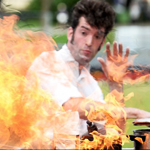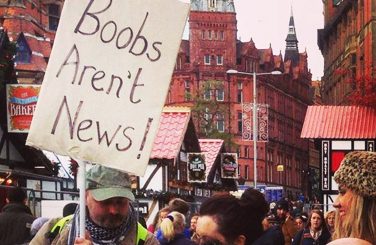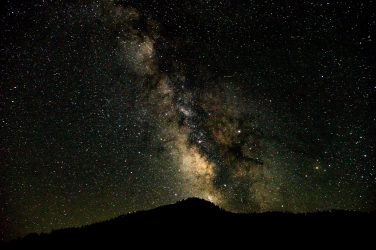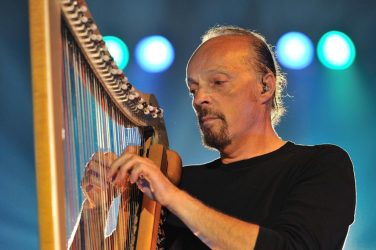This year’s European capitals of culture are bringing a huge variety of events all year round. Find out what Riga and Umeå have prepared!
If you have happened to be in Dublin in 1991, in Bruges in 2002 or in Turku in 2011, you can’t have helped but notice something a little different about those cities: at the time they were all crowned as European capitals of culture. As art aficionados might already know, it’s Sweden and Latvia’s turn this year.
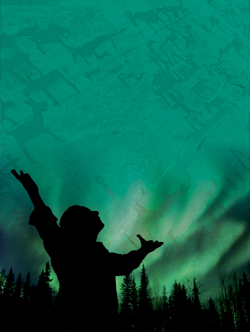
Staring with Greece’s capital in 1985, the Council of the European Union has been choosing European cultural capitals for the past 29 years. Athens was the first city honoured with the title because the then French and Greek ministers of culture happened to be waiting for a flight at the airport together. In order to display the rich cultural life of European cities and at the same time stimulate their local economies, the two ministers decided to place one city in the spotlight every year. While they queued to board the plane, the idea of the annual event was born out of their chat.
Luckily, the floating notion didn’t remain just a good intention. In June that same year the project “European city of culture” was officially launched, although the official annals don’t mention whether this happened at another transportation hub. As time passed, the title was changed to “European capital of culture”. The rules for choosing a city have also evolved since 1985, but the idea remains the same: displaying the diversity of the European cultural scene, stimulating economic growth, regenerating the chosen cities and fostering the feeling of European-ness. The selection procedure lasts 6 years and since the new millennium two cities are named annually as European capitals of culture. The only exception was in 2000 when the continent boasted events in not two, but nine cultural capitals. For a decade, there was also a shorter initiative, the European cultural month, which ended in 2003. This was specifically designed for cities in Eastern and Central Europe.
The city of Umeå, located in the north of Sweden, and Latvia’s capital Riga are to host numerous events in 2014 as part of their cultural programmes.
Umeå (Sweden)
Sweden’s representative in this year’s selection is nicknamed the city of birches. With two universities and an ever increasing population, Umeå is an important urban centre in Northern Sweden. Its cultural heritage originates from a mixture of the traditions of the indigenous Sami people and the Germanic peoples. This is why Umeå’s programme for 2014 is divided into eight seasons, according to the Sami calendar.
Deep winter, early spring, true spring and early summer are the first four seasons, followed by summer, early autumn, true autumn and early winter. Events vary from season to season, but some of the highlights include performances of the Norrlands (or Northern Sweden’s) opera, Horror & Art festival, needlework workshops, aiming to produce the world’s largest table runner, storytelling theatre and art installations of leftover car parts among other happenings. In May women can learn to play roller derby, a sport which involves the graceful technique of figure skating with the aggressive strategy of ice hockey.
For art-lovers, there is an array of exhibitions, ranging from the Sami heritage and identity project to a collection of rock paintings to a ‘human library’ event with the founders of the Sweden’s Kvinnohistoriskt Museum (Women’s History Museum).
Rīga (Latvia)
Rīga’s tight programme for 2014 is just as packed full of seminars, concerts and much more. But if that sounds overwhelming, fear not: those heading to Latvia’s capital this year have a handy little list of themes to help navigate the sea of opportunities.
There are six curiously named threads to follow: Survival Kit, Amber Vein, Riga Carnival, Road Map, Thirst for the Ocean, Freedom Street and a free non-thematic sequence of events. The green Survival Kit line unites creative solutions for all life situations. Featured events include artisan workshops, science cafés and various art projects such as the ‘Flower Blanket’, during which a quilt is produced following the traditional technology of weaving ribbons together. What’s unusual here is that the ribbons contain seeds, so that after being washed the blanket becomes a sort of soil which soon begins to sprout. The environmental theme runs deep in Rīga’s 2014 cultural programme.
The second thematic line, Amber Vein, traces the history of amber and its connection to Latvian collective identity. Riga Carnival celebrates loud and colourful diversity while Road Map spotlights the city’s subversive and peripheral urban culture. The mystically-named Thirst for the Ocean explores the unreachable and desired, be it shores or horizons, while Freedom Street links Rīga’s history with modern-day symbols of power and fate. The name of this thematic line is derived from the Brīvības piemineklis or Freedom Monument in the centre of the capital, commemorating the soldiers who lost their lives in the Latvian War of Independence at the beginning of the 20th century. Events from Freedom Street include the opening of a refurbished museum in a former KGB building and a collaborative European visual arts exhibition on the three generations that lived through WWI.
If it all sounds too grown-up, visitors could always trust the choice of the 12-14 year olds’ jury of the European Children’s Film Days in May.
Those are just a handful of the exhibitions, workshops, talks and festivals which will be held in Umeå and Riga this year and the programmes in both European capitals of culture swell as new events are added continuously.
While Sweden and Latvia display their rich cultural scenes, Plzeň in the Czech Republic and Mons in Belgium are preparing to assume the cultural crown next year. Until then Sami handicraft and Riga’s carnivals are on the list.
Cover photo: Mārtiņš Otto, Rīga 2014 (Courtesy of Rīga 2014)


